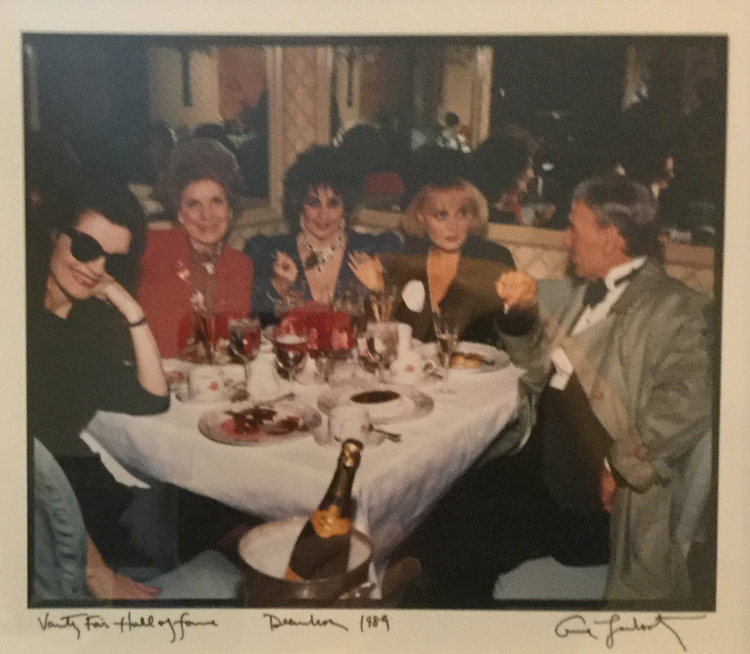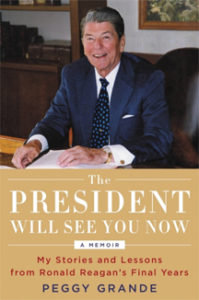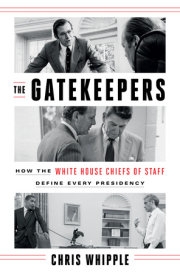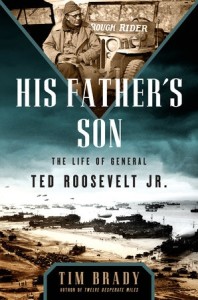The Vanity Fair Diaries: 1983-1992
by Kitty Kelley
 The British excel as diarists, the most famous being Samuel Pepys, followed by James Boswell (the biographer of Dr. Johnson), and Virginia Woolf, the beacon of the Bloomsbury Group. Currently, Alan Bennett, 83, reigns supreme.
The British excel as diarists, the most famous being Samuel Pepys, followed by James Boswell (the biographer of Dr. Johnson), and Virginia Woolf, the beacon of the Bloomsbury Group. Currently, Alan Bennett, 83, reigns supreme.
Now comes Tina Brown pawing at that pedestal with The Vanity Fair Diaries: 1983-1992, which chronicles her glory days as the English editor who came to America to revive the magazine, and later to resuscitate the New Yorker. For this she deserves heaps of Yankee praise.
Once I got my mitts on her book, I did what everyone will do: I turned to the index. Back in 1989, I was lucky enough to be selected along with Ted Turner, Diane Sawyer, Steven Spielberg, and others (plus the tombstone of Andy Warhol) as part of “the Media Decade” in Vanity Fair’s Hall of Fame. Each of us was photographed by Annie Leibovitz, who signed and sent originals of the shots as Christmas presents. I was curious to see if the diaries mentioned that 40-page spread in the magazine.
Flipping to the back of the book, I see one entry on page 347 about “the biggest media influencers” of the era. Wowza. There I am. Whoops. “Trashy Biographer Kitty Kelley.” But I’m not alone. Similar smackdowns await others.
Brown zings Jerry Zipkin, “always in high malice mode” as “Nancy Reagan’s viperish portly walker.” She cuffs Charlotte Curtis, the New York Times editor, as “unbearable,” adding, “What a bogus grandee she is, a coiffed asparagus, exuding second-rate intellectualism.”
She bashes Oscar de la Renta as a “conniving bastard,” but after a kiss-and-make-up lunch, she sees “a nicer side of Oscar at last.” Arnold Scaasi is “the dreaded frock miester,” and Richard Holbrooke “an egregious social climber.”
After inviting Jacqueline Kennedy Onassis to a dinner party in honor of Clark Clifford, Brown dings the former First Lady (“Jackie Yo!”) as “crazed,” writing: “I felt if you left her alone, she’d be in front of a mirror, screaming.” Then she zaps Onassis for “understated malice” in not “writing me a thank you note.”
Midway through these diaries, you might think that most of Brown’s roadkill has been gathered up and gone to the angels. Given the passage of time, some attrition among the grandees of Gecko greed is understandable, but one wonders if Brown would’ve disparaged Si Newhouse, her billionaire benefactor at Conde Nast, as “a hamster,” an insecure “gerbil” frequently in “chipmunk mode,” if he were still alive. Safely dead, he gets blasted for having “no balls at all” because he caved to Nancy Reagan’s request to see Vanity Fair’s profile of her and the president before publication.
Read on, though, and you’ll see that Brown’s slingshot takes equal aim at those not yet consigned to the cemetery. Kurt Vonnegut’s photographer wife, Jill Krementz, is zapped for “extreme pushiness”; Henry Kissinger “is a rumbling old Machiavelli”; Peter Duchin “name drop[s] at deafening volume”; Robert Gottlieb, Brown’s predecessor at the New Yorker, is “a preposterous snob”; and Clint Eastwood is an excruciating bore.
“How could one be bored after one course with the world’s biggest heartthrob?” she asks. “I was.”
She cuffs her former friend Sally Quinn for disinviting her to Ben Bradlee’s birthday party because of Vanity Fair’s book review by Christopher Buckley, who characterized Quinn’s first novel as “cliterature.” Sally was “wild with fury,” Brown writes, a bit puzzled that “the sharpshooter journalist,” who had once libeled Zbigniew Brzezinski, would be so sensitive.
(In a profile for the Washington Post, Quinn wrote that Brzezinski, then national security advisor to President Carter, had unzipped his fly during an interview with a female reporter from People, which Quinn claimed had been captured by a photographer. The next day, the Washington Post retracted her false story: “Brzezinski did not commit such an act, and there is no picture of him doing so.”)
Brown does not chop with a cleaver. She wields her scalpel with surgical precision, blood-letting with small, incisive cuts. She doesn’t linger over the corpse, either. In fact, in these diaries, she jumps from mourning the death of a friend one day to tra-la-la-ing the next as she sits with Vogue’s Anna Wintour, drawing up guest lists for yet another dinner party.
Brown makes intriguing entries about New York’s new-money barons, particularly Donald Trump, who keeps a collection of Hitler’s speeches in his office. On February 23, 1990, she writes that Trump, in between wife number one and two, is “having a fling with a well-known New York socialite. If true, this could give Trump what money can’t buy — the silver edge of class.”
Alas, she doesn’t reveal the name of the silver belle, but she does relate that Trump, enraged by Marie Brenner’s 1988 takedown of him in Vanity Fair, sneaks behind her at a black-tie gala and pours a glass of wine down her back.
One marvels at Brown’s indefatigable energy as she sprints from breakfast with Barry Diller to lunch with Norman Mailer to dinner with the Kissingers. Every day, every night: the parties, the premieres, the galas, the spas, the stylists, the hairdressers, the designers, the limousines. Even she admits exhaustion at her frantic drive to see and be seen — all in service to her role as editor, of course.
These diaries are a celebrity drive-by of the great and the good and, sprinkled with high and low culture, are written with style but little humor, save for the night the newly arrived London editor attended her first Manhattan cocktail party and met Shirley MacLaine.
“What do you do?” Brown asked the movie star. This is laugh-out-loud funny, except to someone who’s laughed in many previous lives. MacLaine was not amused. Upon meeting Lana Turner when the MGM siren was 62, Brown, then 29, decides to “get a piece done that uses her [Turner] as a prism for all the glamorous stars who age without pity.”
The British writer Graham Boynton, who applauds Brown’s high-octane journalism, wrote affectionately in the Telegraph about her early days editing Vanity Fair. Reading a submitted draft for the Christmas issue, she scribbled, “Beef it up, Singer.” Boynton recalled, “It had to be tactfully explained to her that Isaac Bashevis Singer was a Nobel Prize winner for literature.”
I’m knocked out by these diaries, marveling that they were written at the time in such perfect prose. Do all her sentences fall to the page like rose petals in a summer breeze? No editing? No rewriting? No tweaking? If so, this “trashy biographer” genuflects. (My own diaries read like the daily romps of an unhinged mind scrambling for cruise control.)
Diaries provide a psychological X-ray of the diarist, an unintentional autobiography of sorts, and these entries show a woman of immense talent consumed with her dazzling career. And as tough as she is (and must be) in a man’s world, her feminist self resents being dismissed.
When Ad Age demeans her as a “starlet wanting to play Juliet,” she punches back. It’s “fucking sexist crap,” she writes. “Women get stuck with being trivialized and just have to smile.”
Flicking off such criticism like a fuzzball from cashmere, Tina Brown smiles all the way to the bank and then rockets upward, leaving the rest of us in her high-heeled wake
Crossposted with Washington Independent Review of Books

Vanity Fair December 1989
The 1989 Hall of Fame – The Media Decade
Star Sleuth Kitty Kelley
“Catty Kitty stalked the four great beasts of the celebrity jungle—Jackie, Nancy, Liz and Frank. Doing it her way, she clawed past hostile flacks and stonewalling cronies….”
Across the China Sea
by Kitty Kelley
 This slim novel by Gaute Heivoll, translated by Nadia Christensen, presents the life of a couple we know only as Papa and Mama, who built a home in southern Norway for themselves, their two children, and several “boobies,” the term used by the children’s mentally deficient uncle, Josef, to describe the five deranged siblings who come to live with them at the end of World War II.
This slim novel by Gaute Heivoll, translated by Nadia Christensen, presents the life of a couple we know only as Papa and Mama, who built a home in southern Norway for themselves, their two children, and several “boobies,” the term used by the children’s mentally deficient uncle, Josef, to describe the five deranged siblings who come to live with them at the end of World War II.
The siblings — two sisters and three brothers — barely able to function, are taken from an apartment heaped with garbage, mouse-eaten mattresses, and piles of human waste after their parents are declared unfit.
They are saved from being institutionalized when Papa and Mama sign a contract to provide for their care in exchange for a small stipend from the state. The children arrive on a cold snowy evening in February 1945. Watching them get out of the car, Uncle Josef says, “So these are the new crazies.”
Telling the family’s story 50 years later, after Papa and Mama have died, is the surviving son, who knows that working with the mentally disabled was what gave meaning to his parents’ lives, particularly to his father, who had worked for 11 years at a psychiatric hospital.
“That was when I felt alive,” Papa said about the time he spent caring for youngsters, who howled like wolves, and adults could not sit up or feed themselves. It was also where he met Mama, a nurse working in the women’s unit. After they married, they dedicated their lives, according to their son, to caring for the mentally incapacitated “in a Christlike spirit of love.”
At that time, Norway was considered a Christian country, even though statistics show that regular church attendance was, and still is, as low as five percent. Although no longer formally designated as Christian, the Viking kingdom is progressive on issues of morality, and this novel, translated from Norwegian, is a powerful testament to humanity — a tribute to those unique individuals who care for the most fragile among us.
That noble grace of charity is rarely found, even among princes of the church, as the novel underscores when a new minister visits Papa and Mama at home. The pastor is so shaken by “the madhouse” he sees that when he stands at the pulpit the following Sunday, he tells his congregation, which includes Papa and Uncle Josef, about his visit, and suggests that the drooling, incoherent people he met were sub-human-like animals:
“The incident made Papa furious…After that he often spoke about [it]. Still indignant, yet lenient, as if the whole thing had been a misunderstanding. Of course, they were human. They were happy children. God wanted them to be happy children.”
Stipend or no stipend, how many people of modest means living in a harsh climate with no amenities would open their homes to the deranged and fold them into their family? Answering that question for yourself will draw you into the heart of this story, with its small joys and immense tragedy.
Soon, you begin to care about the characters, including the man-child who sits in the yard under an ash tree in the same spot on the same stool staring into space every day for more than 20 years. “No one took his spot, and no one knew what he had seen. The shimmering light from imprisoned souls. Or only clouds and sky, wind and nothing.”
At times, I caught my breath in sadness over the mentally impaired in this story who grow old but never grow up, especially a young girl named Ingrid, one of the five siblings, who cannot speak but listens intently and seems to comprehend on a visceral level.
She howls when she feels psychic pain like she does when told her older brother and sister are being taken to be sterilized. “We understood that an important event was going to occur, but once the word was mentioned, it wasn’t explained or discussed further.” Neither to the children nor to the reader.
For those unfamiliar with Norway, the places mentioned — Tordenskjoldsgata, Brandsvoll, Naerlandsheimen, etc. — might require a map, but the atmospheric descriptions of majestic glaciers, deep fjords, and dense, snow-laden forests suggest a country of wondrous nature which author Heivoll obviously loves. He tells his story with unadorned prose that sometimes shimmers. When Uncle Josef sees snow falling from the sky, he says, “The angels are dancing until their feathers fly.”
The title of the book comes from a crate filled with oranges that came across the China Sea and ended up in the attic of Norway’s psychiatric hospital, where Papa finds it and decides to use it as a bed for the children he has with Mama. Perhaps that sturdy crate is a metaphor for the patchwork family that manages to endure one of life’s greatest tragedies and find a patch of blue sky.
When I came to the poignant end of the novel, I thought of William Faulkner’s 1950 Nobel Prize address in which he spoke of “a life’s work in the agony and sweat of the human spirit, not for glory and least of all for profit, but to create out of the materials of the human spirit something that did not exist before.”
Crossposted with Washington Independent Review of Books.
“The Kitty Kelley Files” on REELZ

The Kitty Kelley Files premiered on REELZ tv channel on July 29, 2017. Subjects covered in weekly episodes airing at 10 p.m. EDT on consecutive Saturdays are Drew Barrymore, Frank Sinatra, Julia Roberts, George Clooney and Princess Diana.
An introduction to the series by Kitty Kelley is posted on YouTube here.
The President Will See You Now
by Kitty Kelley
 I picked up The President Will See You Now, a memoir by Peggy Grande of her 10 years with Ronald Reagan after he left the White House in 1989, with misgivings. Since that time, more than 500 biographies and staff memoirs of Reagan have been published, in addition to his own autobiography and 15 volumes of his Presidential Papers.
I picked up The President Will See You Now, a memoir by Peggy Grande of her 10 years with Ronald Reagan after he left the White House in 1989, with misgivings. Since that time, more than 500 biographies and staff memoirs of Reagan have been published, in addition to his own autobiography and 15 volumes of his Presidential Papers.
There is also the Ronald Reagan Legacy Project, which works to place a monument or memorial to the former president in every state, and, to date, has established Reagan landmarks in 38 of them. The next stated goal is to place a public building named after Reagan in the 3,140 counties in the U.S., proving, if nothing else, a continuing commitment to the Gipper.
At one time, I, too, was fascinated by all things Reagan and researched the subject thoroughly to write Nancy Reagan: The Unauthorized Biography, a 1991 book featured on the covers of Time and Newsweek. Some people, particularly the Reagans, who held a press conference to denounce the book, felt it was too critical of the former first lady, although I gave her full marks for making possible all of her husband’s stunning success.
So,I did not come to Grande’s memoir without interest. Truth to tell, I was seduced by her rationale for writing the book. She said she couldn’t shake a passing comment from a colleague: “If there was a woman who sat outside Abraham Lincoln’s office every day for ten years, don’t you think we would want to know what she saw? And wouldn’t she owe that to history?”
I was all in and wanted to know about the last decade of Reagan’s life, when Alzheimer’s began robbing him of his golden ability to communicate.
The most poignant recollection in the book comes when the author, who writes worshipfully of her boss, recounts the first time she knew something was wrong. She had escorted a group of visitors in to see the former president in his Los Angeles office, and he began telling his pony story but could not remember the punchline.
Anyone familiar with Reagan lore knows about the pony. It was an old chestnut the president had polished to perfection and told so often that staffers knew every word by heart: A father had two sons — one exceedingly pessimistic, the other eternally optimistic. The father locks the pessimist in a room full of toys, convinced the youngster will jump for joy. Instead, the little boy cries because he says the toys will eventually break. The optimist is locked in a room piled high with horse manure, which the father feels sure will elicit yowls of complaint. But the youngster laughs with glee and starts digging. “With all this manure, there has to be a pony in here somewhere.”
Five years into his retirement, the former president could no longer find his pony. After he visited the Mayo Clinic and received his dreadful diagnosis, the buoyant man who always saw “Morning in America” announced that he was entering the dark shadows of the Alzheimer’s disease that would finally claim him in 2004.
Grande writes with knee-bending reverence for Reagan, but she circles Nancy with the kind of arms-length respect one reserves for a tiger. This is the point in her story where the author could have heaped praise on the former first lady as she began her campaign to expand stem-cell research into the disease that was taking her husband.
In 2004, Nancy Reagan put herself at odds with her own political party to publicly oppose President George W. Bush’s policies, which limited federal funding to stem-cell colonies created before August 2001. She joined Michael J. Fox and helped raise $2 million for stem-cell research into Parkinson’s and Alzheimer’s. She lobbied members of Congress to revive legislation to expand federal funding.
At the age of 86, looking frail but sounding firm, she continued speaking out. “There are so many diseases that can be cured or at least helped,” she said. In 2009, she praised President Obama for overturning the restrictive Bush policy. “We owe it to ourselves and our children to do everything in our power to find cures for these diseases.”
It’s puzzling not to applaud Mrs. Reagan’s efforts to find a cure for the disease that killed her husband, whom the author describes with all the genuflecting adjectives of an adoring acolyte. In another glaring omission, she writes that “the Reagans loved children,” and, trying to prove her point, she includes many photographs of her own children visiting the president and first lady at their home in Bel Air, where she tells us the president frequently wore a “striped matching pajama set and white monogrammed RWR robe with leather slippers.”
Yet her book, which purports to chronicle the president’s last years, makes no mention of the Reagans’ own children or grandchildren. She cites no visits, no phone calls, no letters, no emails. She does not even acknowledge the death of the president’s eldest child (with first wife Jane Wyman), Maureen Reagan, 60, in 2001, three years before the president died.
That the Reagans put their marriage before their children will come as no surprise, but that they substituted staff for family, as Grande writes, seems such a sad ending to a book that proposed to pay a debt to history.
Crossposted with Washington Independent Review of Books.
Certificate of Special Congressional Recognition
Jamie Raskin, Member of Congress. presented Kitty Kelley in April 2017 with a Certificate of Special Recognition for “Your Irrepressible Journalism and Irresistible Analysis of the Private Lives of Public Figures.”

The Gatekeepers
by Kitty Kelley
 Political junkies will cartwheel into line to grab copies of The Gatekeepers: How the White House Chiefs of Staff Define Every Presidency by Chris Whipple. They might not be as mesmerized as they were with The Making of the President by Theodore H. White or What It Takes by Richard Ben Cramer, but they’ll have in hand a bible on presidential sons-of-bitches. (That’s how H.R. Haldeman defined the position before he had to resign and go to prison as one of 48 people who served time for serving Richard M. Nixon, the Watergate president.)
Political junkies will cartwheel into line to grab copies of The Gatekeepers: How the White House Chiefs of Staff Define Every Presidency by Chris Whipple. They might not be as mesmerized as they were with The Making of the President by Theodore H. White or What It Takes by Richard Ben Cramer, but they’ll have in hand a bible on presidential sons-of-bitches. (That’s how H.R. Haldeman defined the position before he had to resign and go to prison as one of 48 people who served time for serving Richard M. Nixon, the Watergate president.)
The White House chief of staff is considered the most powerful unelected person in Washington, DC, because he — there’s never been a she — controls access to the leader of the free world. As the president’s main adviser and closest confidante, the chief of staff determines the administration’s legislative agenda and communicates with Congress and the Cabinet. He is the spear-catcher who protects the president from all incoming flak.
“The White House chief of staff has more power than the Vice President,” said Dick Cheney, who should know. At 34, he served as chief of staff to Gerald Ford (1975-1977). By the time he turned 70, Cheney was vice president to George W. Bush and knew how to mow down both chiefs of staff Andrew Card (2001-2006) and Joshua Bolten (2006-2009). In fact, Cheney, known by some as “Darth Vader,” controlled foreign policy in the Bush years and seemed to assume as much power as “the decider” himself.
“Every president reveals himself by the presidential portraits he hangs in the Roosevelt Room,” said the historian Richard Norton Smith, “and by the person he picks as his chief of staff” (pp. 10-11).
By that definition, Whipple could’ve produced an intriguing analysis of Ronald Reagan, who chose the smooth-talking Texan James Baker III as his first chief of staff (1981-1985), followed by the bull-headed Donald Regan, who compared his job to the man in the circus, sweeping up elephant droppings.
Unmentioned by Whipple was John Roy Steelman, the first and longest-serving chief of staff (1946-1953), described in his New York Times obituary as a “onetime hobo from Arkansas.” Truman’s chief of staff was as basic as the man he served. Eschewing his powerful title, Steelman preferred to be called “the president’s chief chore boy.” His biggest chore was his role in ending a 52-day strike by steelworkers, one of the most damaging stoppages in U.S. history.
The Gatekeepers promises to offer “shrewd analysis and never-before-reported details,” but there appears to be little of either in the book. Perhaps Whipple was too grateful for his access to cast a critical eye and dig beneath the glossy surface.
All those interviewed protected their presidents from incriminating revelations, but each agreed being White House chief of staff was the toughest job he ever tackled. (The pressure is so great that few last beyond 18-24 months.) Yet despite the brutal demands, Rahm Emanuel, President Obama’s first chief of staff (2009-2010), said: “I guarantee you every one of the chiefs would say, ‘I’d do it again,’ if asked.”
The major take-away from Whipple’s book is not unlike Cardinal Cushing’s advice to John F. Kennedy when he first ran for office in Massachusetts: “A little more Irish…a little less Harvard.”
The most successful sons-of-bitches are a little more staff…a little less chief. In fact, certain chiefs — Gov. Sherman Adams (Dwight Eisenhower, 1953-1958), Gov. John Sununu (George Herbert Walker Bush, 1985-1987), and the aforementioned Merrill Lynch CEO Don Regan (1985-1987) — harmed their presidents by their inability to shed their arrogant prerogatives of self-entitlement. All had previously held chief-executive positions, but each was fired from his role as White House chief of staff.
Usually an author writes a book and hopes to sell television rights after publication, but Whipple, an award-winning producer at CBS’s 60 Minutes and ABC’s Prime Time, did it the other way around. He provided the interviews for the four-hour documentary The Presidents’ Gatekeepers, which aired on the Discovery Channel in 2013. The New York Times judged the production a “tepid film…awe-struck and dull.” Whipple made the interviews he did with the 17 chiefs of staff alive at the time as the basis of The Gatekeepers, his first book.
For a writer, Whipple’s text hardly inspires, but his chapter notes pique interest. Many of those cited (again, mostly men) hiss and spit at each other like cats being hosed. Ed Meese III dumps on Jim Baker III for leaking to the press. Donald Rumsfeld, chief of staff to President Ford, disses the White House speechwriter Robert Hartmann as an alcoholic, and says Ford’s vice president, Nelson Rockefeller, “wasn’t qualified to be vice president of anything.”
Leon Panetta, Bill Clinton’s chief of staff from 1994-1997, confides the president wanted to fire George Stephanopoulos, which was seconded by Erskine Bowles, Clinton’s chief of staff from 1997-1998: “Of course, George was cut out by the President.” Colin Powell and Brent Scowcroft slam Dick Cheney, who, in turn, stomps on the claim of CIA director George Tenet about bringing the danger of al Qaeda to White House attention. “I do not recall George coming in with his hair on fire…”
The most intriguing chapter note cites an interview with Stuart Spencer, the Republican political consultant closest to Ronald Reagan, who speculates about how the president might have unwittingly approved the Iran-Contra operation to secretly sell arms to Iran and funnel the money to support the Contras in Nicaragua:
I can see those three guys [Robert MacFarlane, National Security Advisor; Oliver North, Deputy Director of the National Security Council; and William J. Casey, CIA director, who was called “Mumbles” because, according to Spencer, “you couldn’t understand him, he couldn’t talk”]. They knew that Reagan was in favor of the contras; he was really upset about the American hostages; and they said, ‘We’ll take advantage of that.’ And they sent Mumbles over to tell him about it. And Reagan didn’t have his hearing aid on! I believe all this could have happened. (p. 319)
Stuart Spencer was extraordinarily close to the Reagans for years. He ran Reagan’s successful campaigns for governor of California in 1966 and 1970, as well as his campaigns for president in 1980 and 1984. He counseled both Ronald and Nancy Reagan throughout their eight years in Washington, and was one of the few people invited to accompany them on their return flight to California upon leaving the White House in 1985. So, his speculation about Iran-Contra deserves more scrutiny, especially because the first lady was terrified the matter would lead to her husband’s impeachment.
Did Whipple ask Spencer whether he discussed Iran-Contra with either Reagan? If he didn’t, why not? How did the subject of Iran-Contra come up in his interviews with Spencer? Did Spencer advise the Reagans about Iran-Contra? What was his recollection of how they coped with the matter personally? Did Spencer share his theory with the first lady or anyone else?
Note to Whipple: a little more time with Stu Spencer…a little less time with the chiefs.
Crossposted with Washington Independent Review of Books
Kitty Kelley to Headline JCA Dinner
Kitty Kelley is this year’s honoree at The Jewish Council for the Aging’s 24th annual Sylvia Blajwas Productive Aging Award Dinner, which will be held Sunday, May 21, 2017 at the North Bethesda Marriott Hotel and Conference Center.
There will be cocktails, hors d’oeuvres and a silent auction, starting at 5:30 p.m.
Previous honorees have included Sam Waterston, Alan and Arlene Alda, Sally Quinn, Doris Kearns Goodwin and Richard Goodwin, Edgar Bronfman Sr., Cokie and Steve Roberts, Phyllis Richman, Judith Viorst, Phil Donahue, Daniel Schorr, Robert Prosky, Eli Wallach and Anne Jackson, Jerry Stiller and Anne Meara, Ruby Dee and Ossie Davis, Eunice and Sargent Shriver, Roberta Peters, Gwen Verdon, Mike Wallace, Al Hirschfeld, Dr. C. Everett Koop, Katharine Graham, and The Honorable Louis Goldstein, Comptroller of the State of Maryland.
The Jewish Council for the Aging is the leading aging agency in the Greater Washington D.C. area.
His Father’s Son
by Kitty Kelley
 After reading His Father’s Son: The Life of General Ted Roosevelt Jr. by Tim Brady, you understand why military service fired the passions of the 26th president of the U.S. and dominated the lives of his four sons.
After reading His Father’s Son: The Life of General Ted Roosevelt Jr. by Tim Brady, you understand why military service fired the passions of the 26th president of the U.S. and dominated the lives of his four sons.
Brady’s biography of Ted Jr., the first son of Theodore Roosevelt, offers only a few sentences about the cloud that hung over the patrician family. Theodore’s mother, Mittie, to whom he referred as “an unreconstructed Southerner,” had insisted his father not enlist in the Union army and oppose her three brothers, fighting for the Confederacy. So, to placate his wife, known to lock herself in a dark room for days, Theodore, Sr. paid a substitute to serve for him during the Civil War.
Brady provides no further information about this decision, which was not uncommon at the time but potentially subjected the Roosevelts to ridicule. As historians put it, those able to purchase a substitute exercised “the right of the rich to hire the poor to do [their] fighting and dying,” a practice that became a factor in the New York Draft Riots of 1863.
Even without a biographer’s knowledgeable insight, you don’t have to be Sigmund Freud to see why Mittie’s sickly, asthmatic son, Theodore, transformed his weak body into a muscular machine and charged into history, banging the drum for war in 1898. He created his own special forces — the Rough Riders — and stampeded with them into Cuba, storming up San Juan Hill and seizing everlasting glory.
Glamorized by press coverage at the time (and by his own well-written recollections of the Spanish-American War), Theodore Roosevelt sailed into politics as a national hero and was elected governor of New York. He ran as William McKinley’s vice president in 1900 and, months later, following the president’s assassination, TR, as he was fondly known, moved into the White House with his wife and six children. He was elected president in his own right in a 1904 landslide victory.
Always a big-game hunter, he endeared himself to the country when he refused to shoot a sick bear on a hunting trip, demanding instead that the poor animal be put to sleep. A cartoon of the normally bellicose Rough Rider protecting a frightened cub enthralled the public imagination, and soon, stuffed “Teddy” bears became a favored toy of children around the world. By 1927, the visage of Roosevelt was being chiseled on Mt. Rushmore alongside George Washington, Thomas Jefferson, and Abraham Lincoln.
But none of this is contained in Brady’s biography of Ted Jr., perhaps because the writer assumes readers will come to his book already grounded in Roosevelt history and simply intuit the immense expectations attendant upon being the firstborn son of such a remarkable man.
Brady tells us that Ted Jr., an anxious child with crushing headaches, a wayward right eye and few pleasing features, grew up emulating his adored father, as did his three brothers — Kermit, Archibald, and Quentin. Their sister, Ethel, is barely mentioned, and there’s not much on Archie, a right-wing Republican who lived to be 85, railing against Communists.
Their colorful half-sister, Alice, is remembered for writing that their father always wanted to be “the bride at every wedding and the corpse at every funeral.” The girls married well, and the boys pleased their father by going to war — WWI and WWII — with all receiving medals for bravery and ribbons for valor.
Ted Jr., an Army brigadier general, was heralded for exceptional rapport with his troops. Having served in the First World War, he begged to serve in the second and, despite war wounds and age (56), he was allowed to lead a division on D-Day, becoming the oldest man to land on Utah Beach, the westernmost of the five landing spots in Normandy.
Decades later, General Omar Bradley wrote: “I have never known a braver man, nor a more devoted soldier.” The night before the invasion, a private named Amos Buck wrote to his commanding officer about “General Teddy”: “[T]he men all know he is a front line general and respect and love him…you have no idea how much good a man of that type does with a bunch of scared inexperienced G.I.s.”
Weeks later, General Teddy was struck by coronary thrombosis and died in his headquarters a few weeks short of his 57th birthday. He was buried in the cemetery at Ste. Mère-Église, but in 1955, he and his late brother Quentin were moved to the American Cemetery at Normandy.
In retrospect, the strangest death for the Oyster Bay Roosevelts was the 1943 suicide of Kermit, which Brady barely mentions. He writes that Kermit, while serving with the British Army in WWI, was unable to maintain sobriety, so had to be discharged.
Returning to the U.S., Kermit dried out and, during WWII, he re-enlisted as a major in the Army. He took a mistress, started drinking again, and was hospitalized with what was gently reported as “recurrent illnesses.” Brady writes that while stationed in Alaska, “exhausted by the…failures of his life miserably sick and tired, Kermit put the barrel of his service revolver beneath his chin and pulled the trigger.”
Brady does not tell us that the War Department told Kermit’s mother he died of a heart attack, and that the New York Times reported his death of “natural causes.” In fact, his suicide was not revealed until the 1980 publication of Sylvia Jukes Morris’ biography, Edith Kermit Roosevelt: Portrait of a First Lady. Ted Jr., who did not know the real cause of his brother’s death but had witnessed his dissolution over time, wrote: “He really died five years ago.”
Surprisingly, Brady also does not chronicle the genetic predisposition of the Roosevelts to the alcoholic depression which ran in the family, affecting Kermit’s paternal grandmother, who exhibited signs of bipolar disorder; and his paternal uncle, Elliott Roosevelt, who suffered chronic bouts of depression and died of alcoholism, as did his maternal grandfather, Charles Carow.
Ten years after Kermit took his life, his son, Dirck, committed suicide at the age of 28. His death in 1953 was reported as a “household accident.” In 1957, Alice Roosevelt Longworth’s only child, Paulina Strum, depressed and drug addicted, committed suicide with sleeping pills.
Suicide seems to permeate a threnody in the family, beginning with the former president’s stated resolve to take his own life after contracting malaria and nearly dying during a 1913 expedition to the Amazon Basin. He said he could not fathom becoming a burden to others on the expedition. Kermit, along on the journey to South America to explore the River of Doubt (later named Rio Roosevelt), is reported to have helped save his father.
Four years later, when his brother Quentin was killed, Kermit edited an anthology of his life, including a short story Quentin had written about suicide. The first line of his morbid tale: “A service revolver is a terrible thing.”
Another eerie detail not included in Brady’s biography — and possibly another missed opportunity to assist in untangling the skeins of a life story — was the Roosevelt friendship with the poet Edwin Arlington Robinson, who wrote Children of the Night. Kermit discovered the book as a teenager and gave it to his father, who shared it with his Cabinet. The book contains the haunting poem of “Richard Cory, who glittered when he walked,” but then, “one calm summer night went home and put a bullet in his head.”
Like his father and his brothers, Ted Jr. loved poetry and even recited verses to reporters who traveled with him during the war. In fact, the best parts of Brady’s book are the quotes from Ted Jr.’s letters. He published several books and wrote well, placing an insurmountable burden on his biographer. Yet, at times, slogging through this book was as onerous as the Roosevelt treks through the Himalayas and New Guinea.
The namesake son of a great man, Ted Jr. showed a definite sense of entitlement, believing he, too, deserved to be governor of New York and then president of the United States, both of which eluded him. As A.J. Liebling wrote, “Old Teddy was a dilettante soldier and a first-class politician; his son was a dilettante politician and a first-class soldier.”
In the end, Tim Brady best sums up his biography of a well-born man with a world-famous name: “As time passed, his story became a footnote in the family saga.”
Crossposted with Washington Independent Review of Books
Settle for More
by Kitty Kelley
 I groaned when the editor suggested I review Megyn Kelly’s memoir, Settle for More. “I couldn’t possibly,” I said. “The girl misspells her name.” (I go through life insisting on the extra “e” in my Kelley, and then get grief from the one-e Kellys for putting on parlor airs.) The editor barked like Ms. Megyn herself on her prime-time Fox show, “The Kelly File.” She told me to suck it up.
I groaned when the editor suggested I review Megyn Kelly’s memoir, Settle for More. “I couldn’t possibly,” I said. “The girl misspells her name.” (I go through life insisting on the extra “e” in my Kelley, and then get grief from the one-e Kellys for putting on parlor airs.) The editor barked like Ms. Megyn herself on her prime-time Fox show, “The Kelly File.” She told me to suck it up.
The book arrived with a staggeringly glamorous cover of the blonde television anchor looking beautiful but forbidding. Before you even get to page one, you know you’re not meeting Rebecca of Sunnybrook Farm. This is not the story of a warm and cozy girly-girl, all frills and fluff. Kelly knows she’s good as any, better than some.
So prepare yourself for Cinderella on steroids: the success story of a young woman who learned early in life that hard work will open any door that’s not already kicked in by great good looks. Her book is a testament to slogging, bone-cracking, round-the-clock effort, which she soldered to a laser focus to succeed.
“I believe in the Steve Martin mantra,” she writes. “Be so good they can’t ignore you.”
Kelly’s memoir is also a love letter to her father, who died suddenly when she was 12. “Sometimes I wonder if he has seen me on TV, and whether he knows that what I’ve accomplished is in part an accomplishment of his. He gave me the confidence to do everything I’ve done.”
But why write a memoir at the age of 46? Television’s czarina, Barbara Walters of ABC-TV, waited until she was almost 80 and off the air to write her life story and to reveal her love affair with Edward Brooke, the first African American to serve in the U.S. Senate.
NBC’s Jane Pauley was 53 when she wrote her book and revealed that she’d been institutionalized for bipolar disorder. Elizabeth Vargas of CBS-TV was 54 when she wrote to reveal her alcoholism. And — make no mistake — a “reveal” is expected of a television anchor who receives a $5 million book advance.
Kelly’s “reveal” comes at the end of her jaunty 320-page book when she busts Roger Ailes for sexual harassment, only to get trashed by some of her Fox colleagues for disloyalty to the boss who made her a star. (For Fox trashers, see index under “O’Reilly, Bill.”)
“I realized I had a choice to make,” Kelly writes. She could be quiet, or “I could ensure that the owners of Fox News Channel — Rupert Murdoch and his sons — understood they might actually have a predator running their company.”
Bye-Bye, Mr. Ailes.
Before she lowers the boom on rutting Roger, though, she relates the trauma of Trump, who made her “bleeding” a global issue and then called her a bimbo, a lightweight, and a liar. He allowed his attorney to encourage 40,000 people to boycott her show and “gut” her after the presidential debate in which she had slammed the candidate with a question regarding his piggish comments about women.
Sounding like a disciple of Oprah, whom she calls her role model, Kelly writes: “Adversity is an opportunity,” and she proved it by asking her attacker to help launch her own Fox Broadcast special. Without consulting anyone at her network, she secretly met with Trump after his poisonous tweets and suggested he sit with her for an exclusive “Barbara Walters type interview.”
Quelle surprise — Trump agrees. Unfortunately, the special bombed. According to Vanity Fair, “The heavily promoted prime time interview was a critical and ratings disappointment.” Slate called her interview “disgusting” and “fawning.” This Kelly doesn’t mention.
Overall, she writes with bawdy good humor and rarely “half-asses it,” as she says. “While discussing the Olympics, I said the word ‘shuttlecock’ made me feel uncomfortable…So sue me.” When her husband defended her to an angry Trump supporter, she told him, “You are definitely getting action tonight.”
Born “lower middle class,” she says she’s “new to money,” having spent most of her life without it. She claims to be a practicing Catholic but admits she doesn’t go to Mass every Sunday. She runs from being labeled a feminist, knowing she might alienate many in her audience, and professes to be an Independent. She doesn’t apologize for sounding racist by once proclaiming Santa Claus “is white,” and then adding, “Jesus was a white man, too.”
Kelly, soon to be renegotiating her television contract for an estimated $20 million a year (eeny, meeny, miny, moe — will she catch Fox or CNN by the toe?), is battling O’Reilly for dominance at Fox, although she dismisses him as an “ideologue” and a “pundit,” while describing her own show as “cool water over hot brain.”
She’s also battling O’Reilly for first place on the bestseller list and, if you look at the top nonfiction books, hers could fit under any of several titles: once a “Scrappy Little Nobody,” she is now “Filthy Rich,” bathed in “Moonlight,” a trifle “Superficial,” but “Born to Run.”
Kelly calls her memoir Settle for More because her mentor, Dr. Phil, changed her life when she heard him say on Oprah: “The only difference between you and someone you envy is, you settled for less.”
As she writes: “This was the moment when I realized I could change my life. I did not have to settle for less. I could settle for more.” And she definitely has.
Crossposted with Washington Independent Review of Books
(Note: In January 2017, Megyn Kelly did her last show for Fox News. After this review was written, Kelly made a deal with NBC to do a weekday daytime show and a Sunday evening show.)
The Courtesan and the Consort
by Kitty Kelley
Pamela Digby Churchill Hayward Harriman opened the front door of her Georgetown mansion. Pearls draped her freckled cleavage and reddish hair framed her milk-white face like a froth of ginger. “Please come in,” she said. “The White Roses are straight ahead.”
Everyone grinned like fools. They had been standing outside 3038 N Street for some time, having paid $1000 to support “Democrats for the ’80s,” better known as Pam PAC. Now they clomped into the house like peasants to the palace.
“Does she really think we’re here to see the Van Gogh?” said one woman, whispering like a second-grader.
In fact, Mrs. Harriman knew full well all were there as voyeurs just wanting a chance to rub up against a copper-bottomed courtesan who finally got one of the richest men in the country to marry her. But what did she care? They were paying her for the privilege.
These paid events hosted by the Harrimans from 1980-1990 usually raised $100,000 an evening, and went a long way toward a Democratic restoration in the wake of the Reagan revolution that had seized control of the Senate for the first time in twenty-eight years….
Read the article here.
Originally published December 30, 2016 at New York Social Diary


